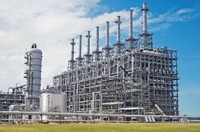Advertisement
Grab your lab coat. Let's get started
Welcome!
Welcome!
Create an account below to get 6 C&EN articles per month, receive newsletters and more - all free.
It seems this is your first time logging in online. Please enter the following information to continue.
As an ACS member you automatically get access to this site. All we need is few more details to create your reading experience.
Not you? Sign in with a different account.
Not you? Sign in with a different account.
ERROR 1
ERROR 1
ERROR 2
ERROR 2
ERROR 2
ERROR 2
ERROR 2
Password and Confirm password must match.
If you have an ACS member number, please enter it here so we can link this account to your membership. (optional)
ERROR 2
ACS values your privacy. By submitting your information, you are gaining access to C&EN and subscribing to our weekly newsletter. We use the information you provide to make your reading experience better, and we will never sell your data to third party members.
Business
Mergers And Acquisitions Go On Hiatus In 2012
by Alexander H. Tullo
December 24, 2012
| A version of this story appeared in
Volume 90, Issue 52

Given the poor economic conditions, it’s not surprising that the pace of deal-making slowed in 2012. According to a midyear report by consulting group PricewaterhouseCoopers, chemical makers announced $25.3 billion worth of mergers and acquisitions in the first half of 2012, compared with $55.8 billion during the same period in 2011. Also, companies agreed to fewer transactions in the first half of 2012: 54 versus 66 the year before.
One of the few blockbuster deals of the year was signed in January. That month, Eastman Chemical snapped up specialty chemical maker Solutia in a $4.7 billion transaction. The deal gave Eastman exposure to new markets, such as tires and auto windshield interlayers. The deal also gave Eastman a greater presence in Asia, where Solutia had been expanding aggressively over the years.
The largest deal of the year was DuPont’s announced sale in August of its automotive coatings business to the private equity firm Carlyle Group for $4.9 billion. DuPont had been shopping the business around since late 2011 because it wasn’t meeting its criteria of 7% sales and 12% earnings growth.
In another deal involving coatings, Cytec Industries agreed to sell its coatings resins business to the financial buyer Advent International for $1.2 billion. Cytec said it aimed to focus on faster-growing businesses such as advanced composites.
The year saw plenty of takeover drama. Polyvinyl chloride and building products maker Georgia Gulf rejected an unsolicited $1 billion bid from rival Westlake Chemical. Georgia Gulf Chief Executive Officer Paul D. Carrico called the offer an “opportunistic” attempt to buy the firm on the cheap. Georgia also rejected a sweetened $1.2 billion offer from Westlake several weeks later, and Westlake dropped its bid in May.
Later in the year, Georgia Gulf became the hunter rather than the hunted. In July, the firm agreed to merge with PPG Industries’ commodity chemicals unit, a major chlorine producer, in a $2.1 billion transaction. Under the deal, PPG spun off its chemicals unit and merged it with Georgia Gulf.
At the end of the year, PPG took the cash from the deal and bought the North American decorative paints business of AkzoNobel for $1 billion. The deal included the well-known Glidden brand name, 5,000 employees, and eight manufacturing sites.
Another takeover drama unfolded in August, when the private equity firms SK Capital and First Reserve agreed to purchase the C4 chemicals specialist TPC Group for $850 million. Although TPC’s board was satisfied with the price, some large shareholders weren’t and asked for the deal to be scuttled. Fuel additives maker Innospec, with financial help from the private equity firm Blackstone Group, chimed in with a higher offer. SK and First Reserve came back with an improved bid that TPC shareholders eventually accepted.




Join the conversation
Contact the reporter
Submit a Letter to the Editor for publication
Engage with us on Twitter